Tying a beef tenderloin before roasting may seem like an unnecessary step, but it is crucial for ensuring evenly cooked meat. A properly tied tenderloin cooks evenly from end to end, has a uniform thickness, and holds its shape beautifully.
As a food blogger always looking for ways to step up my culinary game, learning how to tie a tenderloin was a game-changer for my beef roasts. The results are tender, juicy meat that cooks in the same amount of time from edge to edge.
In this article, I’ll walk through the simple process of tying a tenderloin using butcher’s twine. You’ll learn:
- Why it’s important to tie beef tenderloin
- Step-by-step instructions for tying beef tenderloin
- Tips for best results
Let’s get started!
Why Should You Tie Beef Tenderloin?
Tenderloin refers to a cut of beef from the short loin primal cut. It has very little fat and connective tissue making it incredibly tender. However, this lack of fat means that tenderloins can cook unevenly.
The tapered shape of a tenderloin also causes uneven cooking. The thinner “tail” end cooks faster than the thicker center.
Tying the roast with butcher’s twine solves these issues by:
- Creating an even thickness so it cooks evenly
- Preventing the tenderloin from spreading out as it cooks
- Allowing seasoning or herbs to adhere to the meat
Tying also gives the roast a uniform shape for beautiful presentation.
Step-By-Step Instructions for Tying Beef Tenderloin
Tying a tenderloin is simple once you learn the technique. Here is a step-by-step guide:
Ingredients
- Beef tenderloin roast (about 2 pounds)
- Butcher’s twine (cotton or linen)
Instructions
-
Trim the tenderloin: Remove the silverskin membrane from the surface of the meat. Slide a sharp knife under the membrane while pulling it away from the meat.
-
Prepare the twine: Cut enough 12-inch lengths of twine to tie the roast at 1-1.5 inch intervals.
-
Make an anchor knot: Tie a loose double knot at one end of the tenderloin and pull tight. This secures the twine.
-
Loop and tie the first knot: About 1-1.5 inches from the anchor knot, loop the twine around the meat and tie another knot.
-
Continue tying knots: Keep looping the twine and tying knots at even intervals along the length of the roast.
-
Secure the end: Once you reach the other end, loop the twine back along the tied roast and finish with a double knot.
-
Season the meat: Sprinkle with salt, pepper, herbs as desired. Let rest for 1 hour before roasting.
That’s all there is to it! With the roast evenly tied, it’s ready for the oven.
A properly tied beef tenderloin. Source: The Spruce Eats
Tips for Best Results
-
Choose a uniform tenderloin for even cooking. Avoid oddly shaped roasts.
-
Make sure knots are snug but be careful not to tie too tightly. You don’t want to squeeze the meat.
-
Let the tied roast rest at room temperature for about an hour before roasting so the center isn’t cold when cooking.
-
Use a meat thermometer to monitor doneness. Cook to 5̊F below your desired temp since the roast will continue cooking after removed from the oven.
-
Allow the roast to rest for 10-15 minutes before removing the twine and carving. This allows juices to redistribute.
-
Serve tied tenderloin with horseradish sauce, béarnaise sauce or chimichurri for delicious flavor.
-
Save any leftover roast for sandwiches or beef salads. Simply slice and serve cold.
Get Comfortable with Tying Roasts
Learning to properly tie beef tenderloin, as well as other roasts like pork loin or crown roast, is an invaluable skill for any home cook. With a few lengths of kitchen twine, you can ensure roasts that are cooked evenly, maintain their shape, and look gorgeous brought to the table.
It does take practice to get the tying technique down. Be patient with yourself. The more roasts you try tying, the more comfortable you’ll become.
Soon you’ll be able to impress dinner guests with a perfectly cooked, beautifully tied beef tenderloin roast. Try this simple but important technique and take your roasts to the next level!
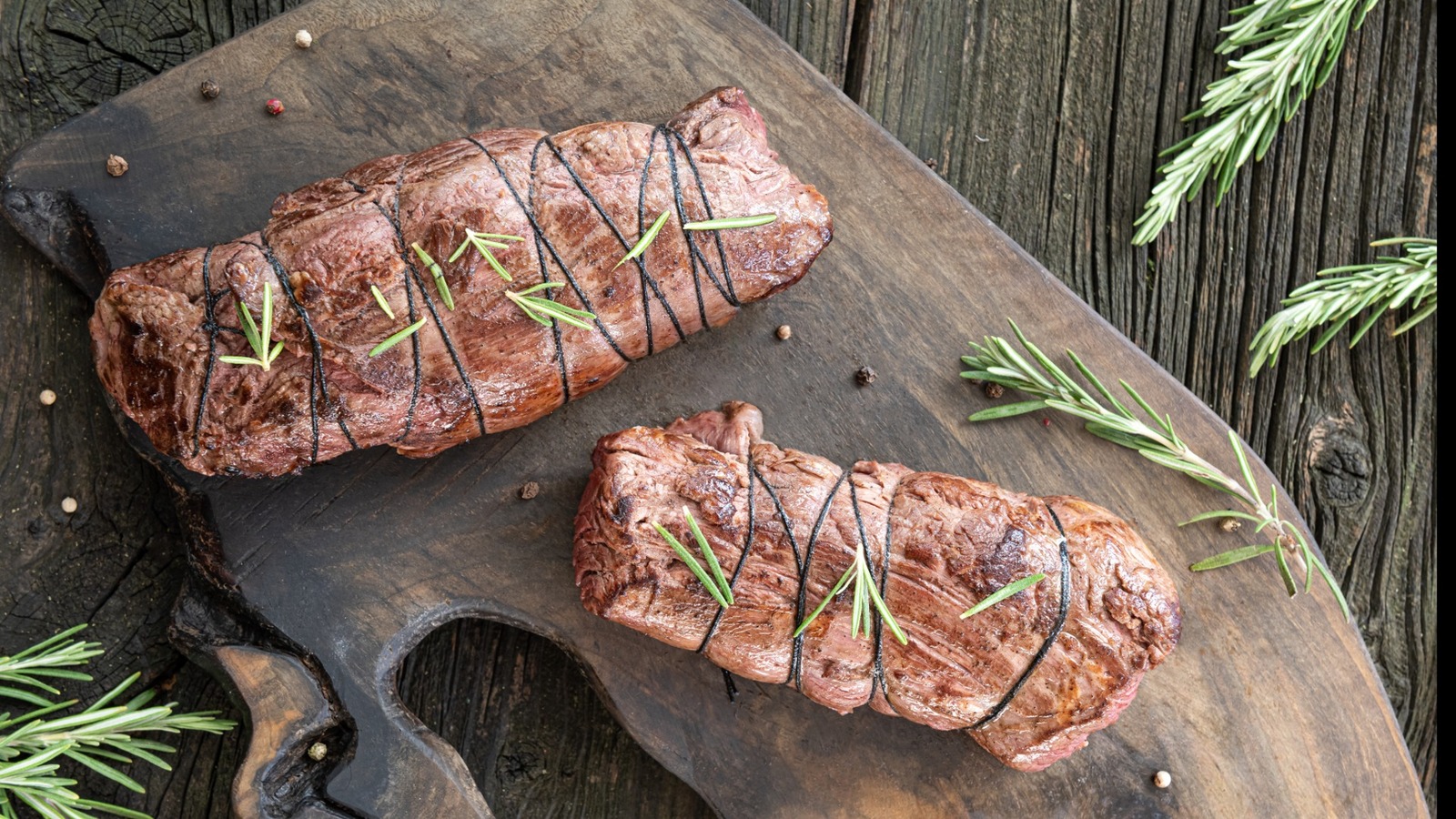
Equipment and ingredient notes
- Kitchen twine: My top pick is any butcher’s twine made from cotton. Linen twine is a close runner-up, and if you don’t have access to either of those, unflavored dental floss can work in a pinch.
- Beef tenderloin: My Roast Beef Tenderloin recipe calls for a 2-pound portion, but feel free to use this method for how to tie beef tenderloin with whatever meat serving matches your crowd size. Look for center-cut beef tenderloin, also known as Châteaubriand. This cut of meat has a thick layer of fat that needs to be removed before roasting.
- On one end of the roast, slide the blade of your knife between the meat and the shiny connective tissue (silverskin).
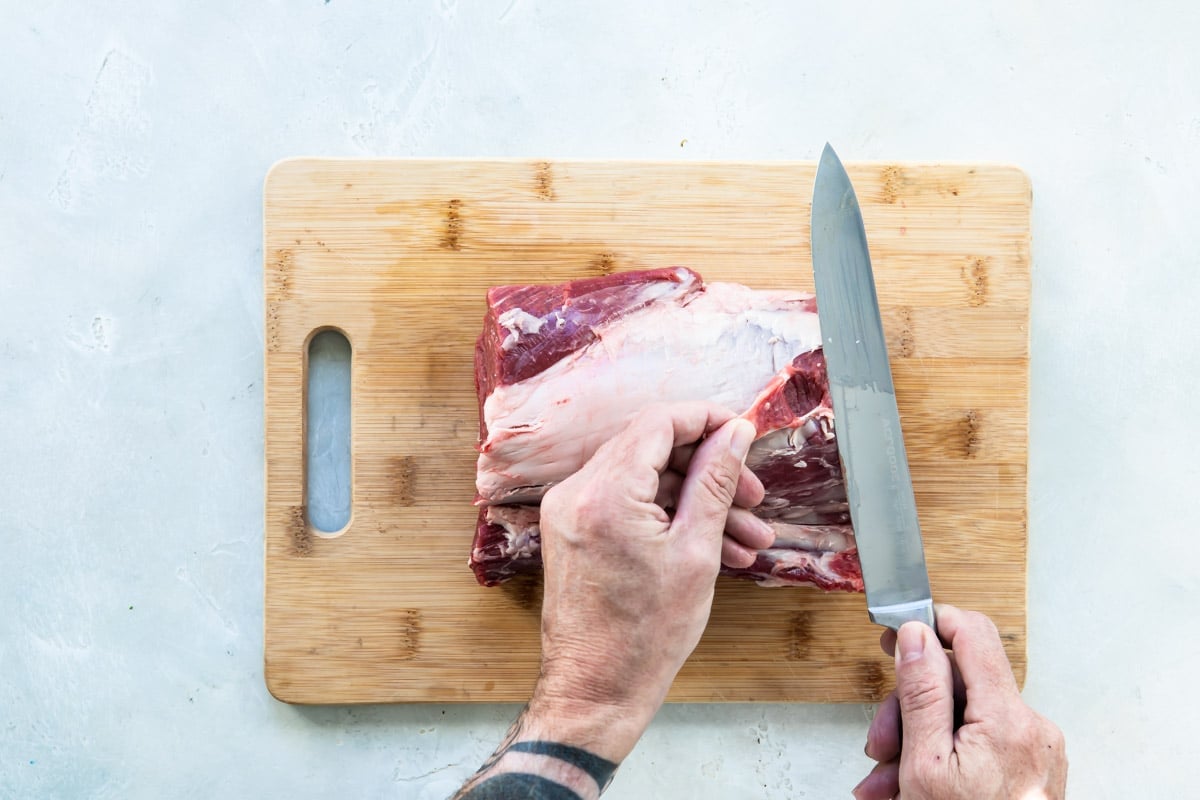
- Immediately begin to pull the connective tissue back away from the meat as you continue to cut between the two until you’ve reached the other side of the roast.
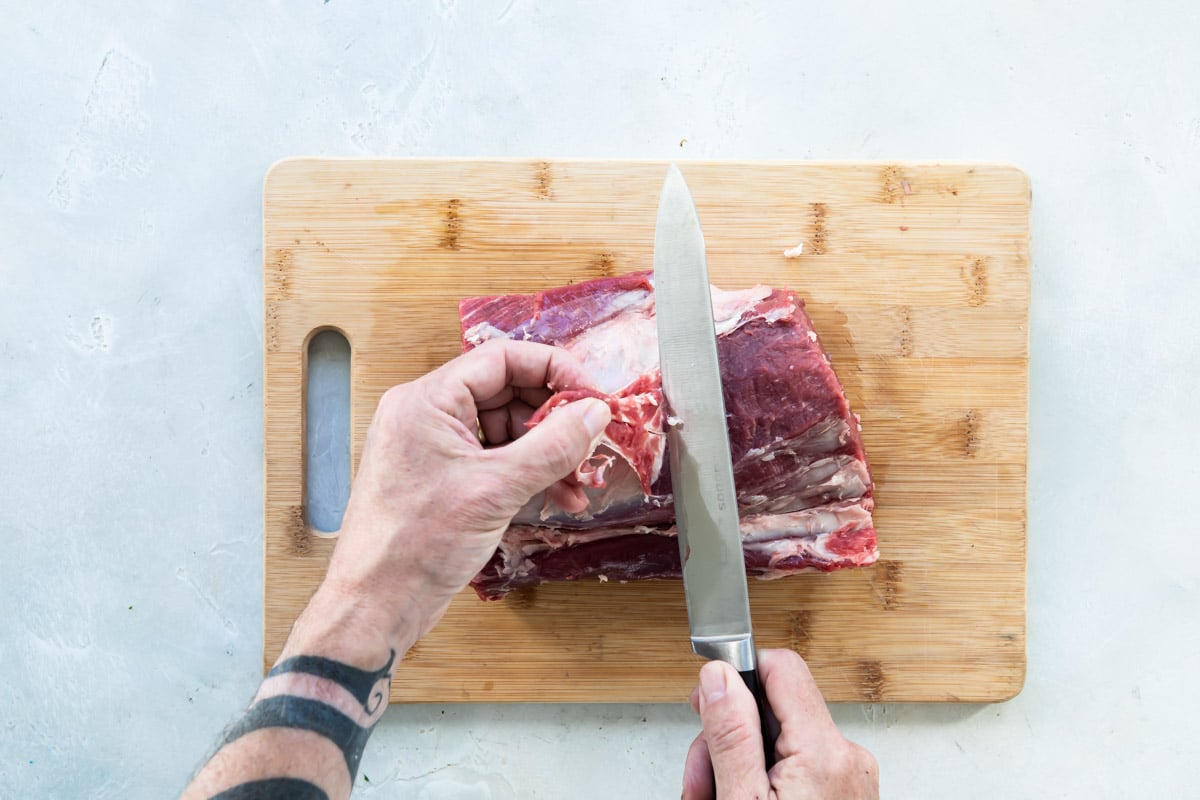
- Work in strips if necessary and repeat as needed.

- Using 12-inch lengths of kitchen twine, tie a loose knot around one end of the meat and pull until snug to make an anchor knot.
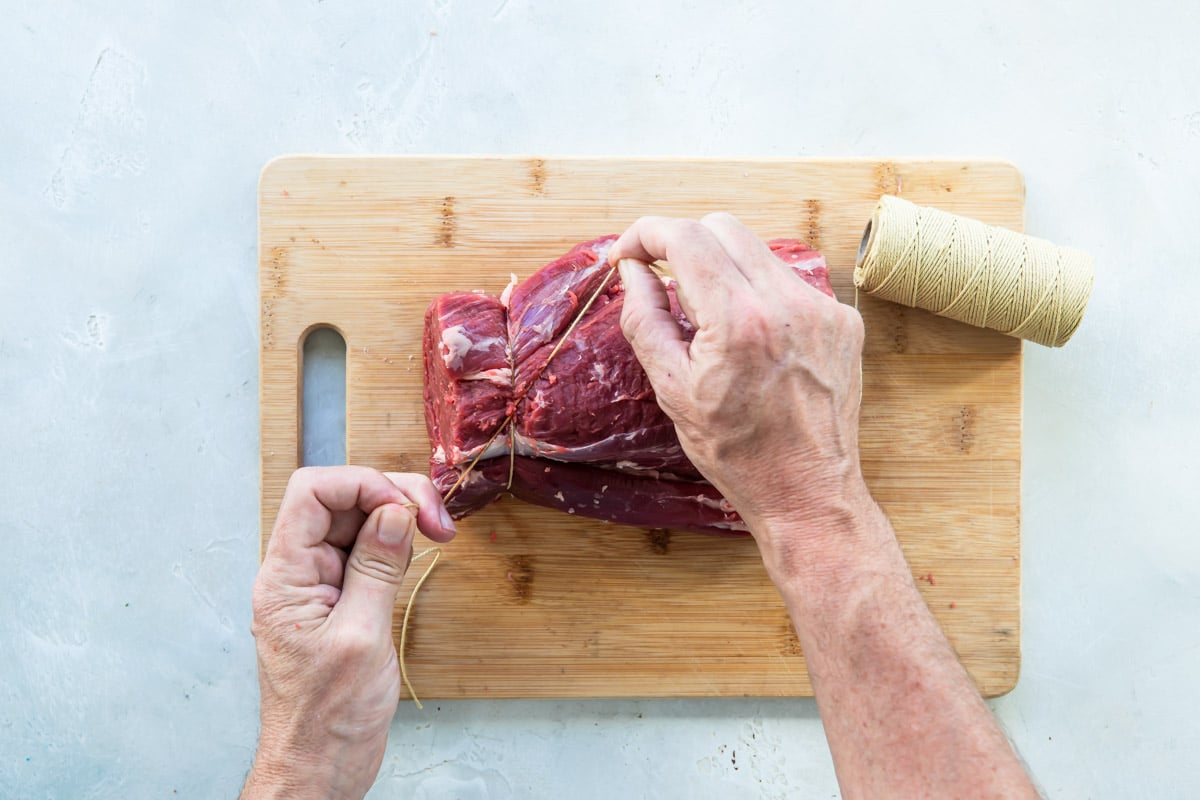
- Pull a length of twine away from the anchor to create a large loop.
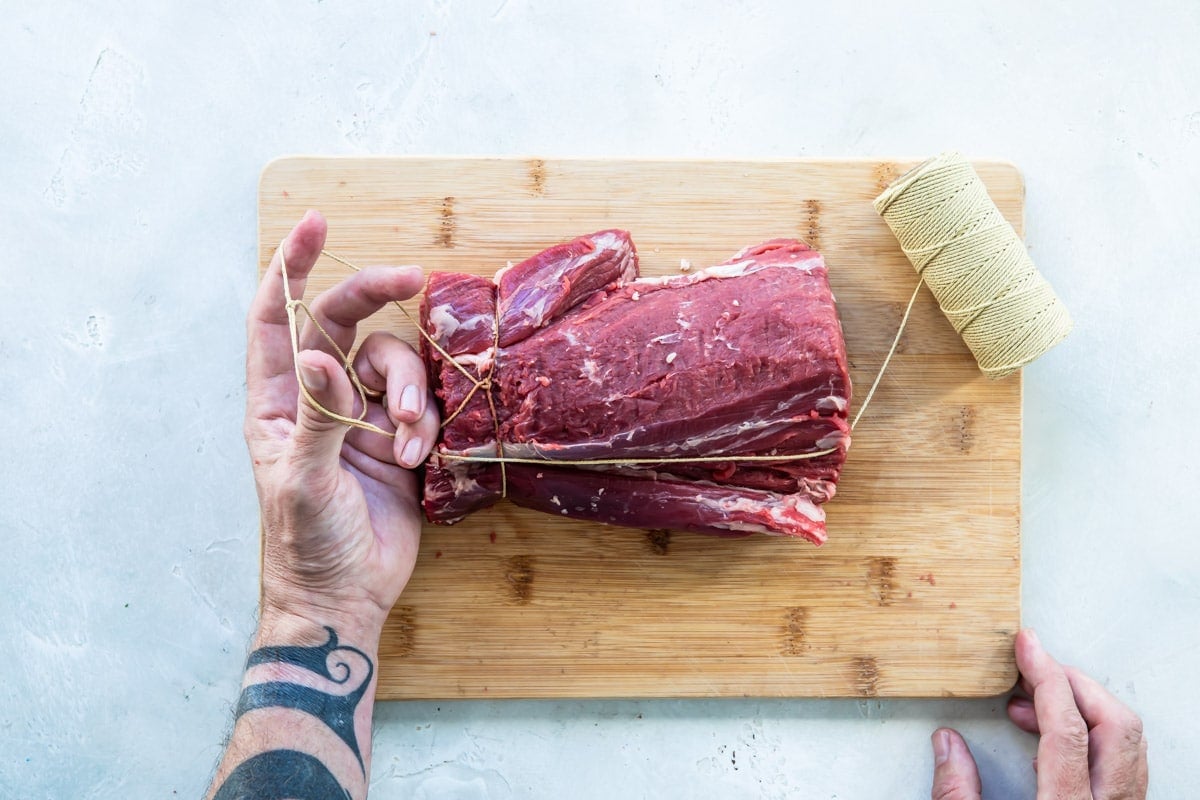
- Loop it around the tenderloin.
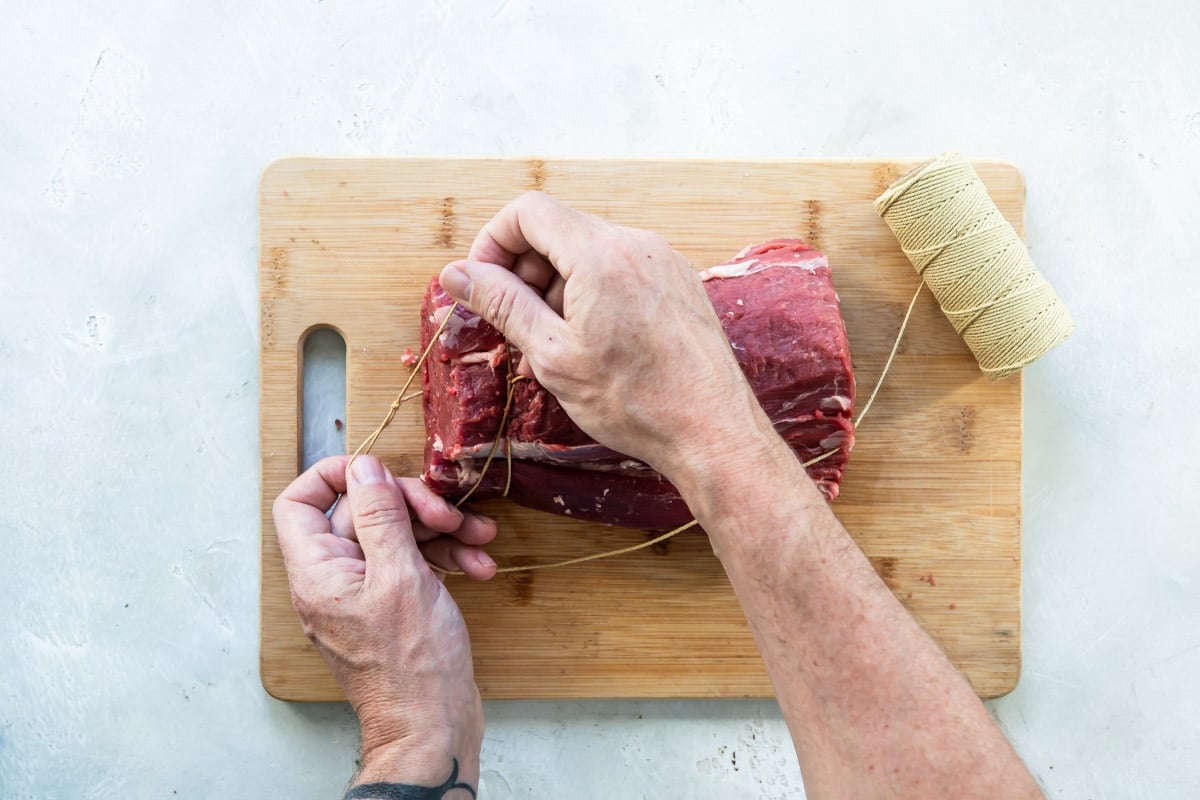
- Space it about 1 ½ inches from the anchor knot and tie a second knot.
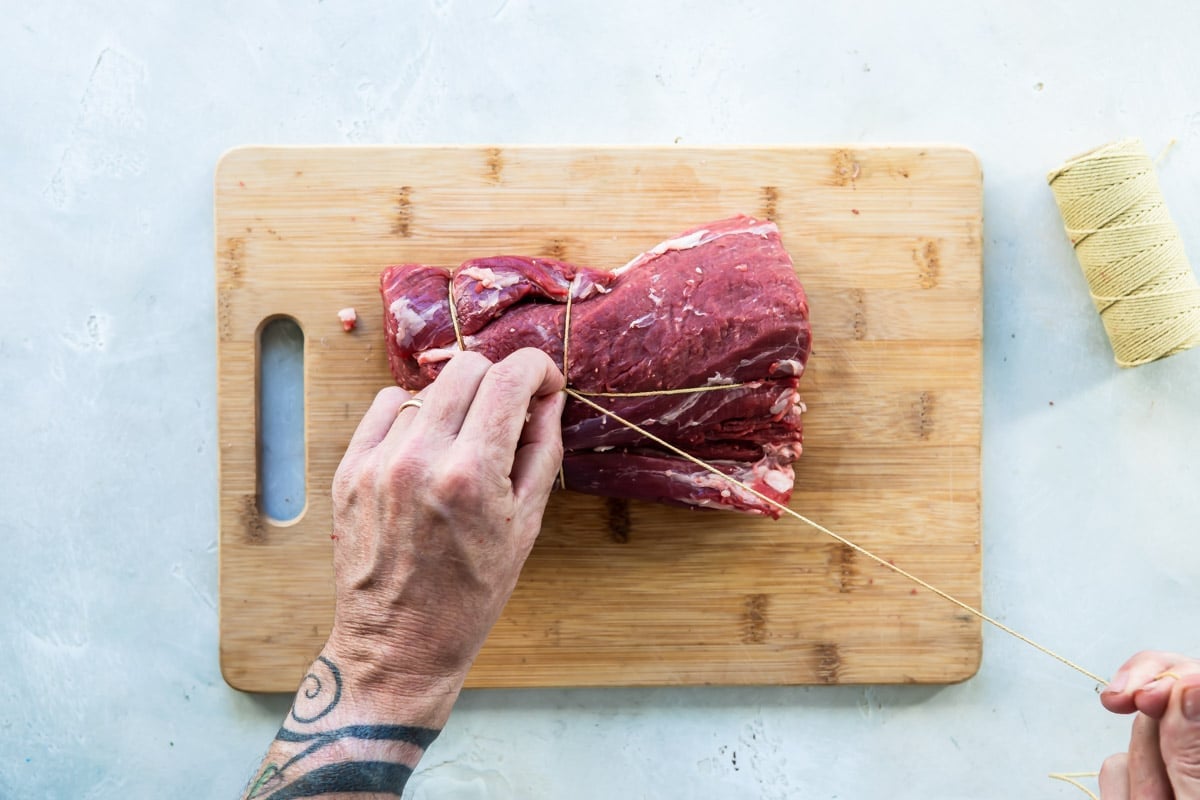
- Pull more twine to create a third loop and secure it 1 ½ inches from the second knot.
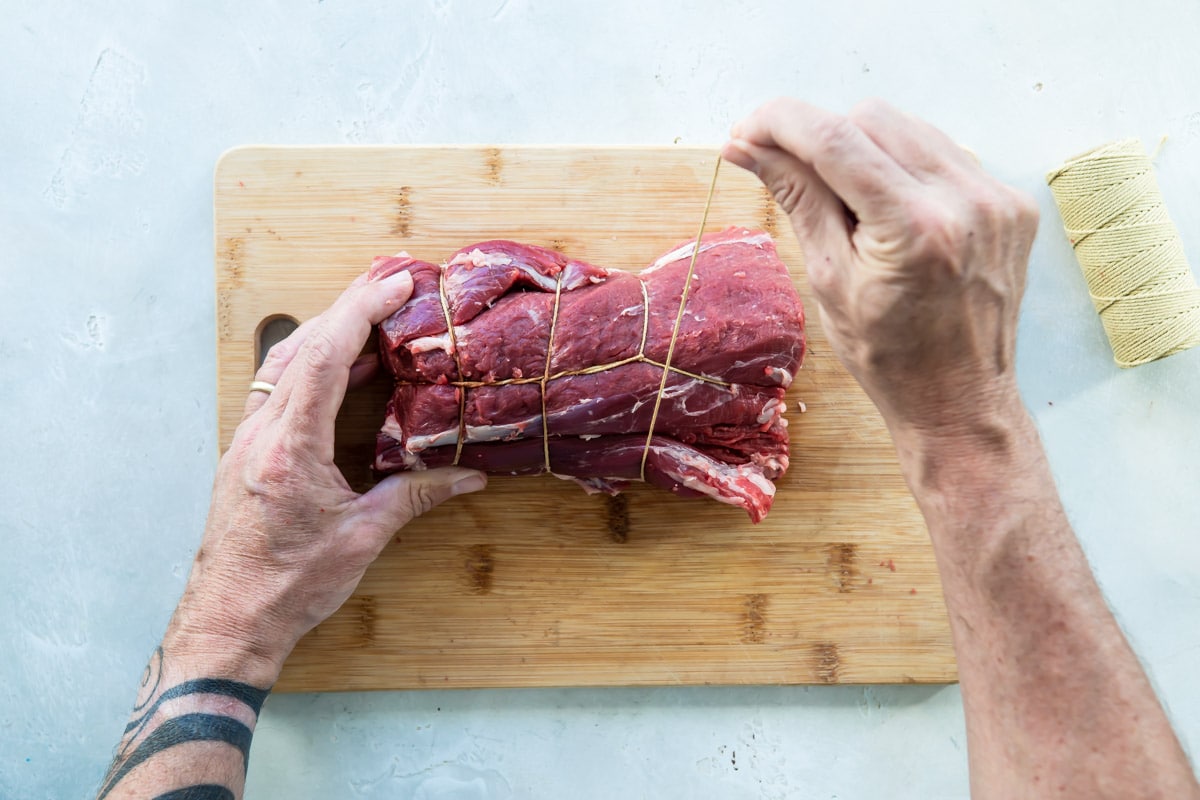
- Continue tying the roast crosswise at 1-inch intervals until the toast is evenly tied. Sprinkle tied roast with salt, cover loosely with plastic wrap, and let stand at room temperature for 1 hour.
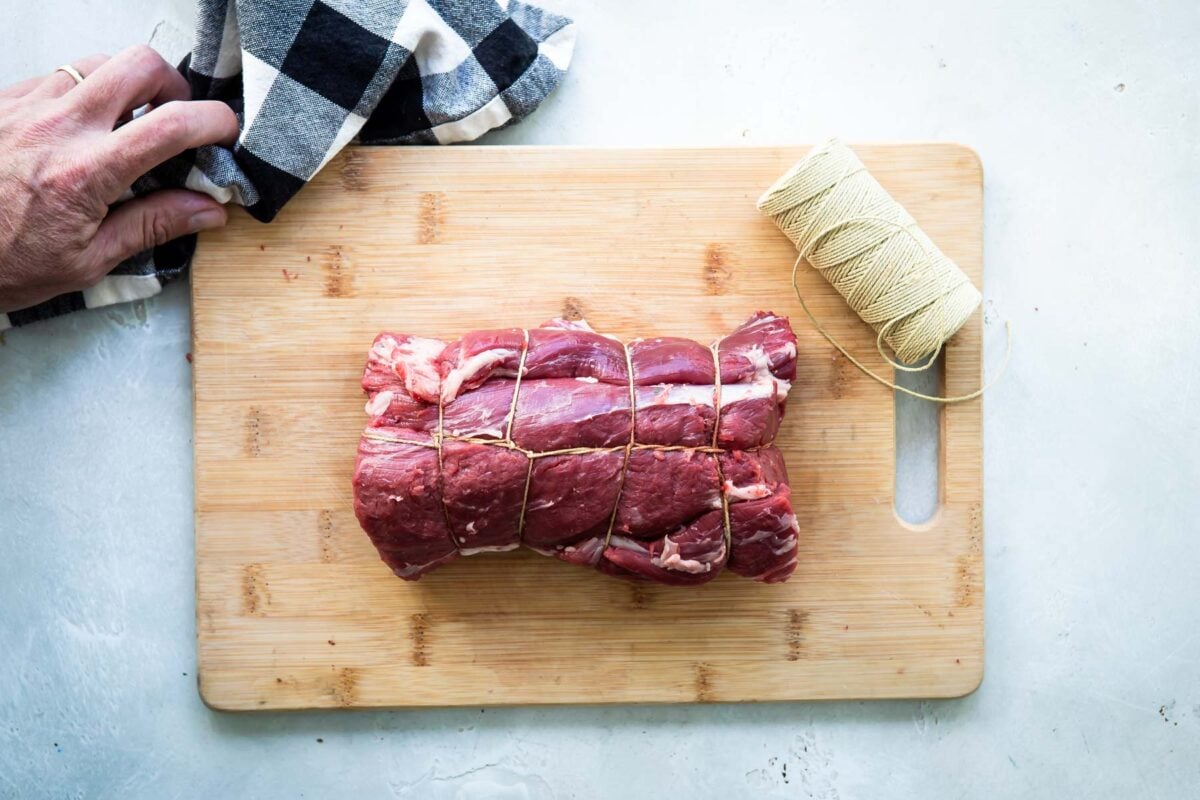
- Adjust an oven rack to the middle position and preheat oven to 300 degrees. Set a wire rack over a rimmed baking sheet (line the baking sheet with foil for easier cleanup). Pat roast dry with paper towels, then sprinkle evenly with pepper. Transfer roast to prepared rack or roasting pan.
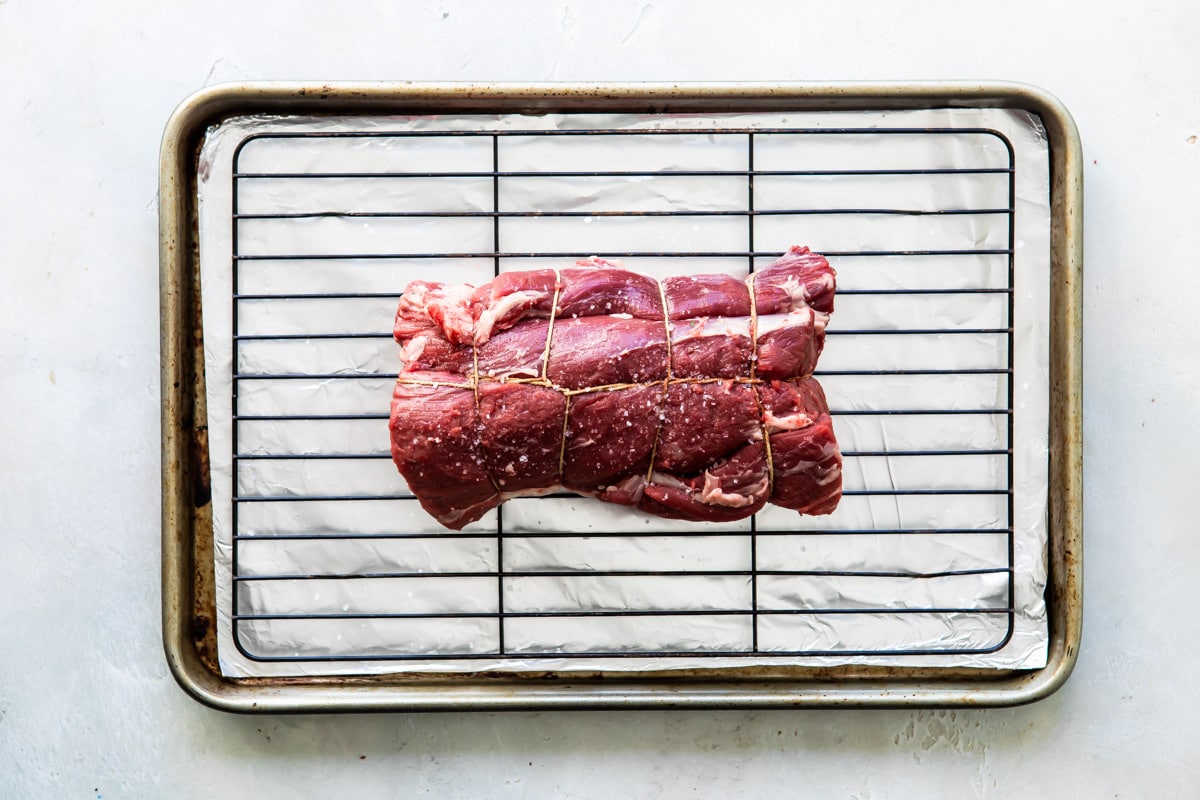
- Rub the roast with butter or olive oil. Roast until beef registers 125 degrees (for medium-rare), 40 to 55 minutes or 135 degrees (for medium), 1 hour to 1 hour and 10 minutes. Juices should run clear when tested with a probe thermometer. Flip the roast halfway through cooking.
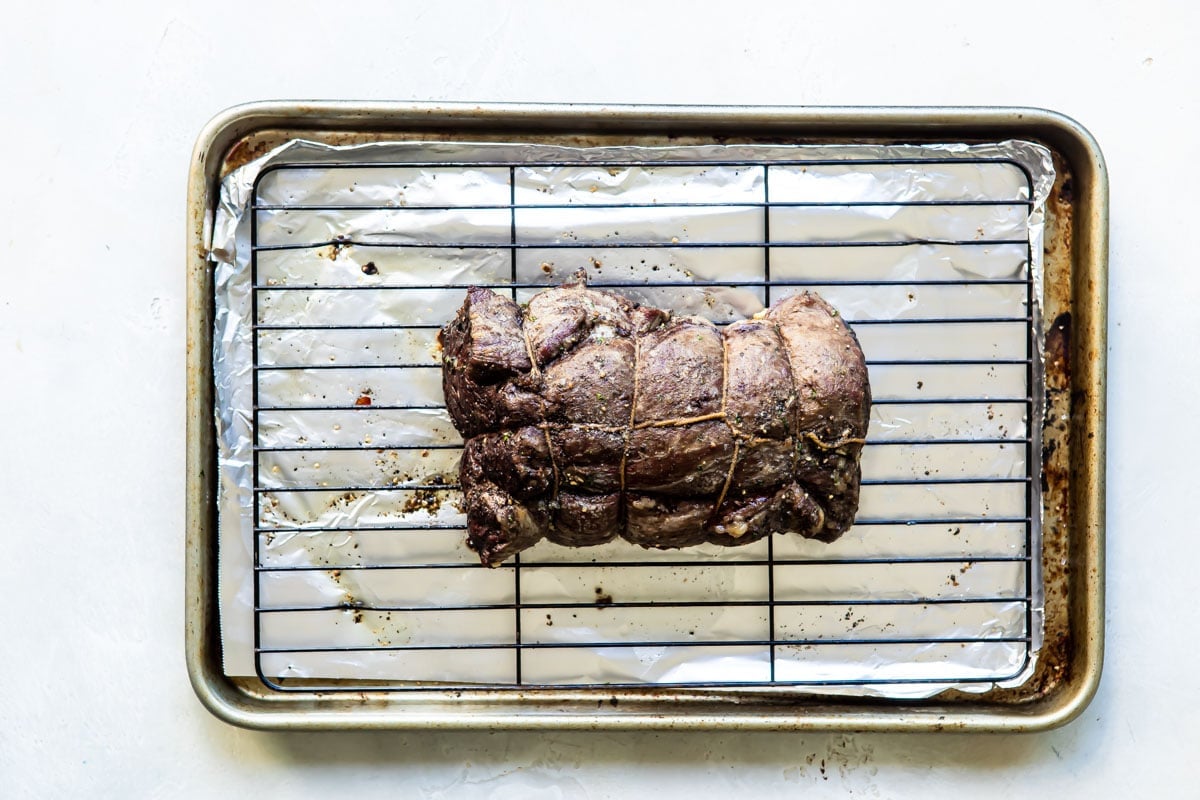
- In a large pan over medium-high heat, heat vegetable oil until just smoking. Add roast to skillet and sear until well-browned on all sides, about 2 to 4 minutes per side.
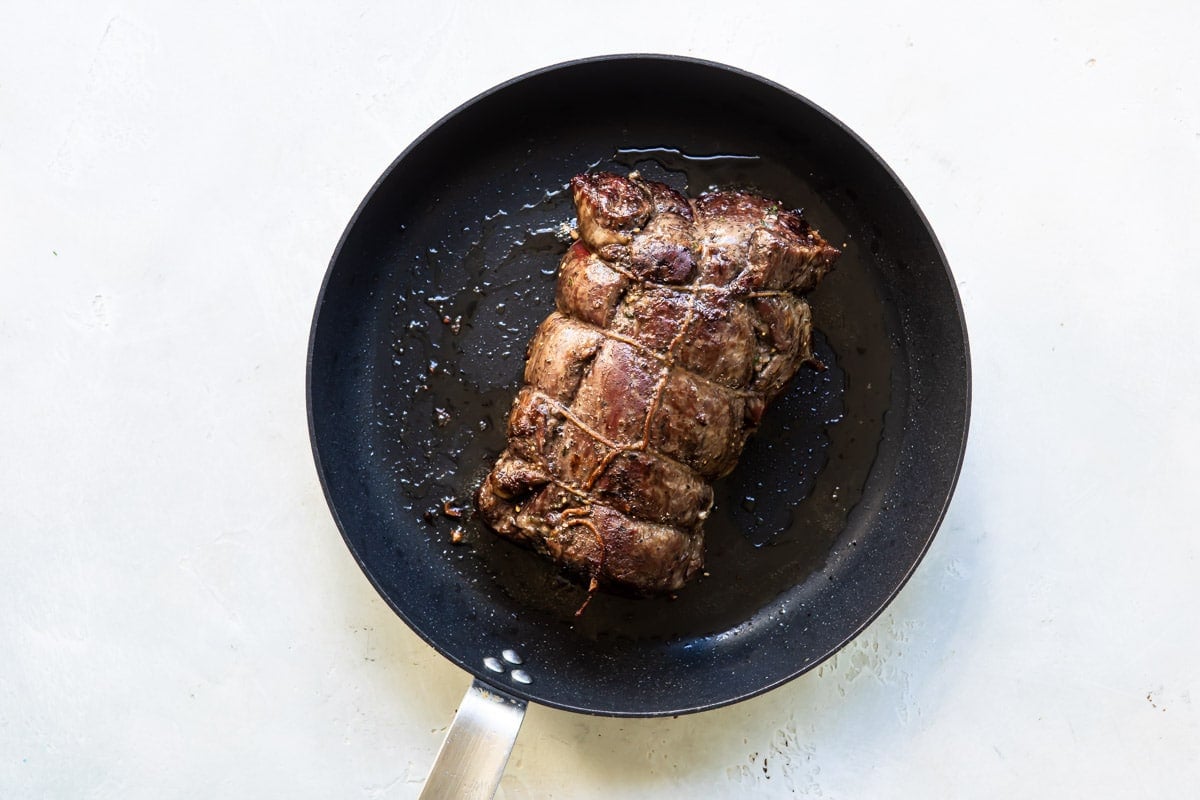
- Transfer roast to a carving board and let rest for 15 minutes. Remove twine and cut roast crosswise into 1/2-inch thick slices.
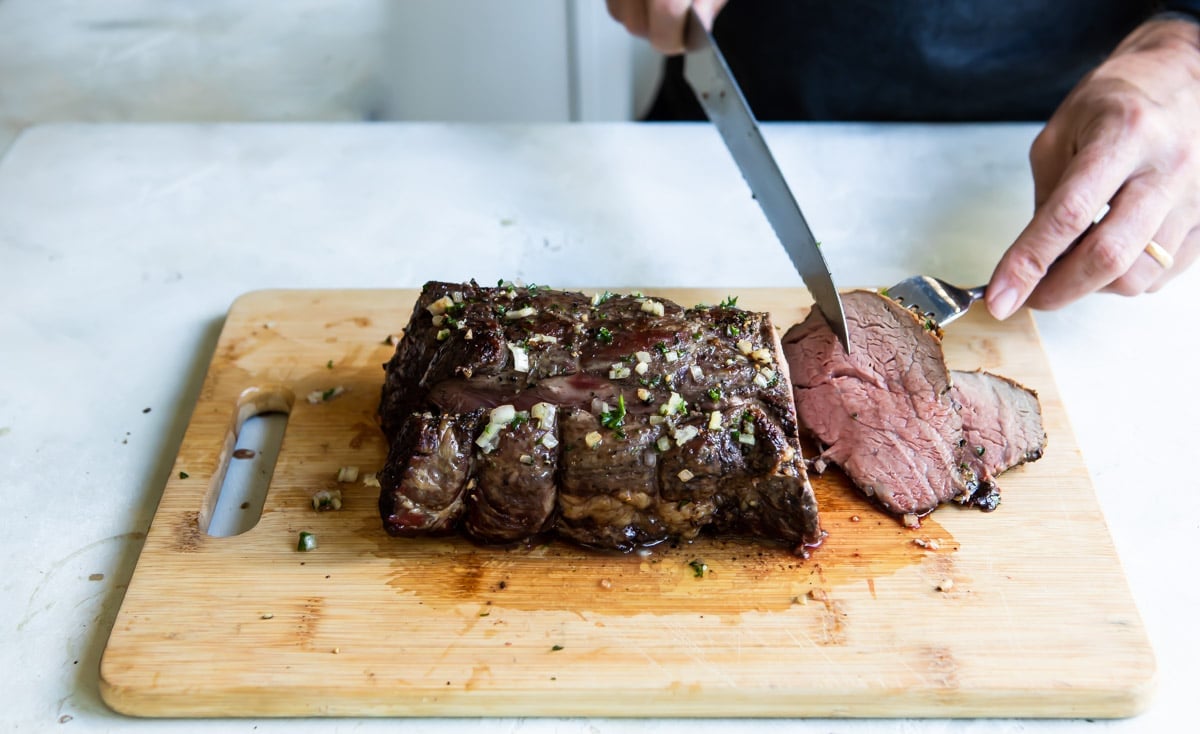
Recipe tips and variations
- Yield: This technique for tying beef tenderloin uses a 2-pound portion of beef which feeds about 6 adults, but the technique can be used for any roast.
- Prime Rib with Mustard Cream Sauce: Put your new meat-tying skills to use with a show-stopping Prime Rib. This one is served with a mustard sauce, but a creamy horseradish sauce would be delicious too.
- No-tie steaks: Looking for beef without the twine? Try Grilled New York Strip Steaks, Surf and Turf with filet mignon and lobster tails, or Grilled Tri-Tip.
- Compound butter: Add more flavor to any steak with a pat of flavorful compound butter. Just combine softened unsalted butter and your favorite aromatics and herbs like garlic, shallots, finely minced red onions, rosemary, thyme, black pepper, or kosher salt, roll into a log, chill, and slice.
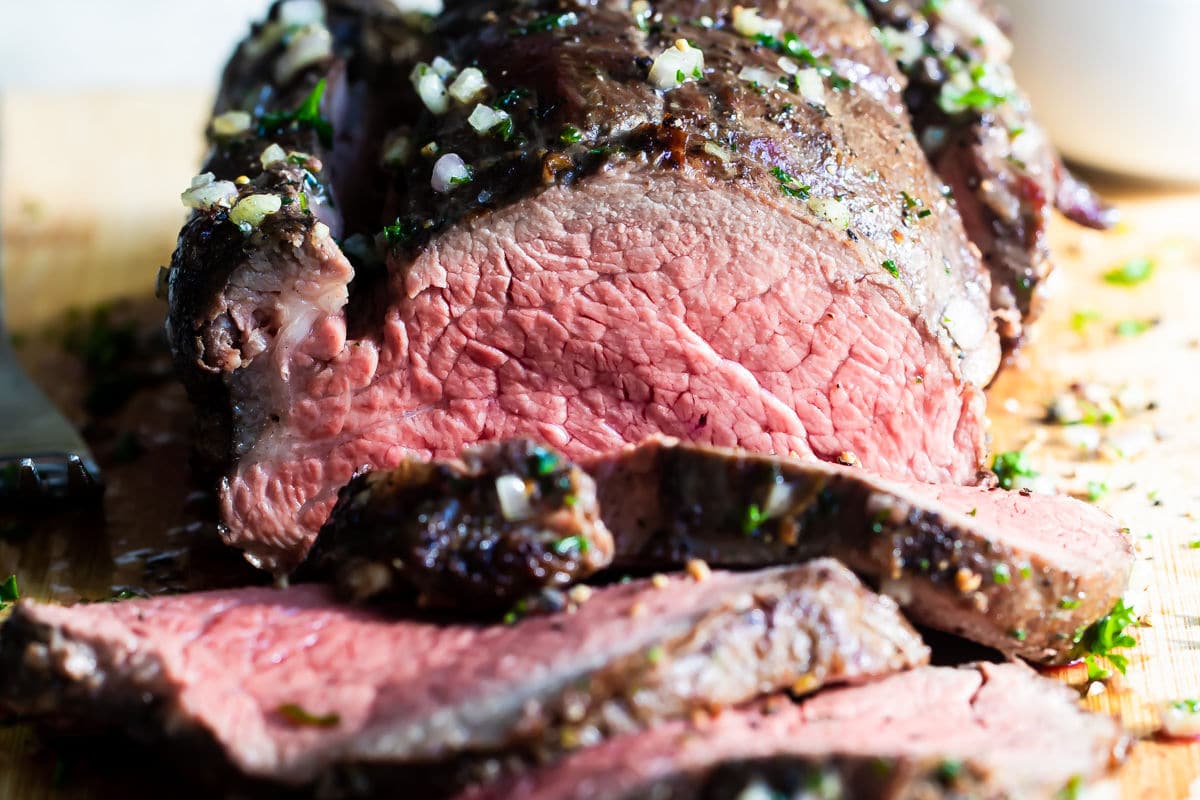
Slide tip of a chef’s knife under connective tissue, keeping the knife tip close to surface of the meat. Using your other hand to pull connective tissue tight against the blade, smoothly slide the knife angled away from the meat to slice away the white portion on the top of the beef tenderloin.
Keep that kitchen twine handy. Cornish hens, chickens, turkeys, and prime rib all benefit from being tied or trussed.
I swear by my instant-read meat thermometer, and follow these temperature guidelines for any beef preparation:Rare: 120 to 125 degrees FMedium Rare: 130 to 135 degrees FMedium: 140 to 145 degrees FMedium Well: 150 degrees FWell: 160 degrees F While many chefs (and I) prefer a slightly lower temperature for juicer, more tender beef, the USDA has a more conservative minimum safe cooking temperature of 145 degrees F. Cook to your desired doneness level.
Working with Meat and Fish
Working with Meat and Fish
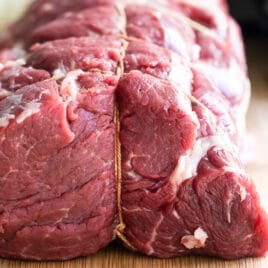
Tying Beef Tenderloin⎢Martha Stewart’s Cooking School
FAQ
Do you cook beef tenderloin with the string on?
Cooking it on its own can cause it to sag and turn misshapen as it cooks, so I always like to truss a tenderloin by tying it up at even intervals.
Why do you truss beef tenderloin?
For boneless roasts, like a tenderloin, truss to ensure the meat is evenly sized. For the end that tapers, this may mean folding the meat back over on itself.
